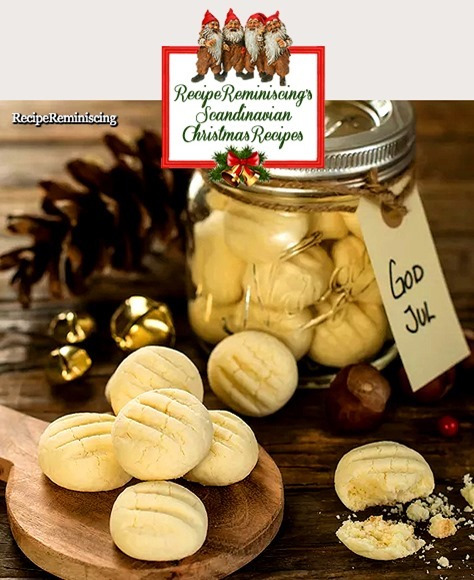Embark on a culinary adventure into the heart of Norwegian gastronomy with Rakfisk, a daring traditional dish that entices the taste buds with its distinctive flavors and unique preparation. Derived from the Old Norse words “rak,” meaning “moist,” and “fisk,” meaning “fish,” Rakfisk is a fermented delicacy that showcases Norway’s cultural heritage and close connection to its natural resources. While its potent aroma and tangy taste may seem daring, true food enthusiasts will find delight in this age-old Norwegian specialty. With courage and curiosity, let us explore the centuries-old recipe that captures the essence of Rakfisk.
The preparation time for making Rakfisk is relatively short, but it requires a longer fermentation period for the fish to cure properly. Here’s an estimated breakdown:
Preparation Time: 15-20 minutes
Fermentation Time: 2 to 3 months
The actual hands-on preparation, which includes salting the fish, assembling the ingredients, and storing it in an airtight container, takes about 15 to 20 minutes. However, the majority of the time is spent on fermenting the fish, allowing it to develop its unique flavors and textures over the course of 2 to 3 months.
Please note that the fermentation time can be adjusted to suit your taste preferences. Some people prefer a shorter fermentation period for a milder taste, while others may choose to extend it for a more pronounced flavor. However, the traditional fermentation period for Rakfisk is generally 2 to 3 months.
Rakfisk Recipe:
Ingredients:
- Fresh trout or char, gutted, scaled, and cleaned
- Coarse sea salt
- Water
- Airtight glass containers or buckets
Instructions:
- Begin by procuring the freshest trout or char available. It is essential to choose fish of the highest quality to ensure a successful and safe fermentation process.
- Rinse the fish under cold water to remove any excess slime and pat them dry with paper towels.
- Rub a generous amount of coarse sea salt over the entire surface of the fish, including the cavity. The salt will act as a preservative and help draw out moisture from the fish.
- Place the salted fish in a clean, airtight glass container or a bucket. Ensure that the container is large enough to comfortably accommodate the fish and leave some space at the top.
- Cover the fish with enough water to submerge them completely. Use a weight, such as a clean, heavy stone, to keep the fish submerged in the brine. This prevents air exposure during the fermentation process.
- Seal the container tightly with a lid or plastic wrap to create an airtight environment. This is crucial for the fermentation process to occur safely.
- Store the container in a cool and dark place, such as a cellar or a refrigerator, for approximately 2 to 3 months. The fermentation time may vary depending on personal preference, with some enthusiasts opting for longer periods for a stronger flavor.
- Periodically check the Rakfisk during the fermentation period to ensure that no mold or harmful bacteria have developed. If any issues arise, discard the fish immediately and restart the process with fresh ingredients.
- Once the desired fermentation time has passed, remove the Rakfisk from the container and carefully rinse off any excess salt.
- Serve the Rakfisk in thin slices, accompanied by traditional Norwegian garnishes such as flatbread, sour cream, chopped onions, and boiled potatoes.
Enjoy the bold and unique flavors of Rakfisk, and relish in the authentic tastes of Norway’s culinary heritage.
Note: Due to the fermentation process, Rakfisk can have a strong odor that might be off-putting to some. Nevertheless, its distinct taste is cherished by Norwegians during the winter months, making it an essential part of their cultural and gastronomic traditions. Approach Rakfisk with an adventurous spirit and an appreciation for traditional foods to truly savor its charm.
Tips and Tricks for Making Rakfisk:
- Choose Fresh and High-Quality Fish: The success of Rakfisk heavily relies on the quality of the fish used. Opt for the freshest trout or char available, preferably sourced from reputable fishmongers or local markets.
- Proper Salting: Ensure that you apply enough coarse sea salt to cover the fish thoroughly. The salt not only enhances the flavor but also acts as a preservative during the fermentation process.
- Create a Secure Airtight Environment: Seal the container tightly with a lid or plastic wrap to create an airtight environment for fermentation. This prevents unwanted bacteria from entering and ensures a safe and successful fermentation.
- Use a Weight to Submerge the Fish: To prevent air exposure during fermentation, use a clean, heavy stone or a similar weight to keep the fish fully submerged in the brine.
- Monitor the Fermentation Process: Regularly check on the Rakfisk during the fermentation period. Look for any signs of mold or off-putting odors, and if detected, discard the fish immediately.
- Adjust Fermentation Time to Taste: The duration of fermentation influences the flavor of Rakfisk. If you prefer a milder taste, ferment the fish for a shorter period. For a more robust flavor, extend the fermentation time.
- Store Rakfisk in a Cool Environment: Keep the container with Rakfisk in a cool and dark place, like a cellar or refrigerator. This helps maintain the proper fermentation conditions.
- Serve Rakfisk with Traditional Accompaniments: When serving Rakfisk, offer classic Norwegian accompaniments like flatbread, sour cream, chopped onions, and boiled potatoes. These pairings complement the rich flavors of Rakfisk and enhance the overall experience.
- Experiment with Flavors: For those seeking variations, experiment with different herbs and spices during the curing process. Some traditionalists use a variety of herbs like dill, fennel, or juniper berries to impart unique flavors.
- Share the Experience: Rakfisk is best enjoyed in the company of friends and family. Sharing this Norwegian specialty with loved ones adds to the joy of the culinary experience.
- Respect Cultural Heritage: While Rakfisk might have a potent aroma, embrace it as an integral part of Norwegian culinary heritage. Approach Rakfisk with an open mind and respect for the traditions and flavors it represents.





















Trackbacks/Pingbacks